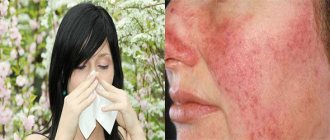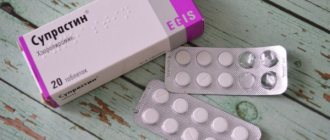Mixtures based on hydrolyzed proteins
Nutrition based on hydrolyzed proteins is prescribed for low-weight newborns, infants with severe forms of food allergies, and with partial digestibility of substances.
Baby formula contains many useful components:
- lactose – forms intestinal microflora;
- dextrin maltose – increases calcium absorption;
- Omega-3/6 (polyunsaturated fatty acids) – develop cognitive functions, brain;
- inositol – protects the respiratory system;
- taurine – ensures the functioning of the heart muscle.
Carbohydrates, minerals, vitamins, as well as nucleotides to enhance immunity, palm oil is included in a composition that is close to mother's breast milk.
If you need a hypoallergenic formula for newborns, the list will help you navigate the product range:
- Bebelac Pepti-Junior and Nutrilak;
- Alfare and Peptamen (Nestle);
- Friso pep AC and Nutrilon;
- Pepticate and Humana Ha;
- Nan Ha and Pregestimil.
Compound
In addition to the main active ingredient (soy, goat's milk, hydrolyzed protein, casein), any hypoallergenic formula for infants contains other useful components. Their main task is to improve digestion and alleviate the symptoms of the disease.
Be sure to study the composition of the products you purchase so as not to accidentally run into another allergen.
Manufacturers can use as additional ingredients:
- salt: there is very little of it in hypoallergenic formulas so that the child’s excretory system is not overloaded;
- Omega 3 and 6 fatty acids help the proper formation of the brain and vision;
- antioxidants (most often tocopherol and ascorbic acid) strengthen the immune system;
- calcium, phosphorus and vitamin D contribute to normal skeletal development;
- peptides form the body’s sensitivity to cow’s milk protein;
- L-carnitine has a beneficial effect on digestion and the nervous system;
- taurine strengthens the heart muscle;
- inositol is necessary for the normal functioning of the respiratory system: it helps relieve bronchospasms and swelling of the larynx due to allergies;
- lecithin helps the circulatory system function.
When studying the composition on the package, remember: the best hypoallergenic mixture is the one that contains a minimum of additives, so as not to provoke a new outbreak of the disease in the baby.
As a rule, children prone to allergies can react with a rash to a variety of foods, not just soy or cow's milk protein. So be extremely careful: when introducing crumbs into the diet of even such a seemingly safe food, monitor the state of his health.
In addition to the composition, what else should you pay attention to when choosing?
"frisopep"
The long-term experience that the company has gained in the field of baby nutrition has allowed it to develop a special product for children with allergies to cow's milk protein. The mixture is used as complementary food even for those babies who were born weighing less than 3 kg. "Frisopep" has a pleasant taste, which distinguishes it from other similar infant formulas of protein hydrolyzate.
Therefore, many mothers leave positive reviews about taking this product, despite the fact that at the first meeting the child may not accept it immediately. However, with prolonged use, as a source for therapeutic nutrition, it deserves high marks, as it turns out to be highly effective.
This is a product that includes lactose, vegetable oils, prebiotics and nucleotides, vitamins, mineral salts, whey protein hydrolysate. The mixture is suitable for children from birth to 12 months. Many parents leave positive feedback about how quickly the positive effect occurs.
According to the annotation, “Frisopep” can be recommended for use as a formula for feeding babies who have various disorders in the gastrointestinal tract or the presence of an allergic reaction to cow’s milk protein. The nucleotides included in the product and the deep hydrolyzate of casein whey strengthen the baby’s immunity.
There is a separate line of “Frisopep AS”, which is produced on the basis of fully hydrolyzed casein. Moreover, if a child does not experience positive dynamics from taking a regular formula, it is recommended to try changing it to a product with split casein. In practice, it was noted that in children who had a moderate form of allergy, a stable remission occurred and subsequent recurrent symptoms were not observed.
Indications
It should be noted right away that hypoallergenic formulas for newborns are prescribed by a pediatrician after examination, appropriate tests and confirmation of the diagnosis.
Having seen a characteristic rash on her baby’s body, a mother should not immediately make an independent decision about switching him to such a diet. First - an examination and only then - the use of this type of product for medical reasons, which include:
- food allergies to milk protein (cow or goat) and soy;
- intolerance to gluten, which is a mandatory component of regular baby food;
- syndrome of impaired absorption and digestion (celiac disease, intestinal infections, non-infectious diarrhea, galactosemia);
- atopic dermatitis;
- hereditary predisposition to allergic reactions;
- immaturity of the digestive system;
- pancreatic insufficiency;
- prematurity;
- malnutrition.
All these diseases can appear in a child from the first days of life or a little later. After clarifying the diagnosis, the pediatrician decides to switch the baby to a different diet.
. At the same time, the hypoallergenic infant formula prescribed to them can be therapeutic or prophylactic, depending on the severity of the manifestations of the disease.
How to choose a hypoallergenic mixture?
There are few indications for feeding special formulas:
- manifestations of allergies;
- indigestion;
- prematurity, poor weight gain.
Allergy-free food for babies with milk intolerance is made from soy.
These are mixtures whose name says “Soy”:
- Nutrilon Soya is a product produced by the manufacturer Malyutka
- Nutrilon and Friso Soya, dairy-free for children from birth
- Bellakt Soya, dairy-free from one year
- Detolact Soy
A list of hypoallergenic mixtures that are the best according to parent reviews is presented in the table. for newborns is relative, since the best is selected individually.
Article on the topic: How to treat an allergic rash on a child’s bottom?
| Name | Short description | Price |
| Nutrilon (Nutrilon) | The manufacturer offers several types of anti-allergenic food from birth to one year | 600-960 rub. depending on type and packaging |
| NAN | Hypoallergenic from birth, anti-reflux, anti-colic, lactose-free, fermented milk | from 700 rub. per can |
| Similac (Similac) | Hypoallergenic, palm oil-free, from birth to one year | from 740 rub. per can |
| Bellakt GA | Non-allergenic baby food made in Belarus, lactose-free mixture | 450 rub. per box |
| Nestle Nestogen (Nestogen) | Inexpensive formula for feeding healthy babies, which rarely causes allergies | from 270 rub. |
| The baby is hypoallergenic | Fermented milk formula for babies with digestive problems | from 350 rub. per box |
Rating
The leader of our rating of hypoallergenic mixtures is “Alfare” from (Switzerland)
In order not to get lost in the variety of brands and brands of baby food, a list of hypoallergenic formulas for newborns will help you make your choice. He will orient you to the manufacturing countries and price range.
These are the products that have proven themselves well in this niche, have received a lot of grateful reviews from young mothers, and have also undergone clinical trials and won the approval of pediatricians.
Hypoallergenic formulas for newborns
- Alfare. Nestle. Switzerland. $19.
- Friso Pep AC. Friesland Foods. Holland. $16.
- Friso Pep. Friesland Foods. Holland. $16.
- Frisolac GA 1. Friesland Foods. Holland. $11.
- HiPP Combiotic HA 1. HiPP. Germany. $11.
- Hipp GA 1. HiPP. Germany. $11.
- Humana GA 1. Humana. Germany. $14.
- Kabrita. Hyproka. Netherlands. $14.
- NAN GA 1. Nestle. Switzerland. $10.
- Nestogen. Nestle. Switzerland. $8.
- Nutramigen. Mead Johnson Nutrition. USA. $6.
- Nutrilak GA. Nutritek. Russia. $8.
- Nutrilak Peptide STC. Nutritek. Russia. $9.
- Nutrilon GA 1. Nutricia. Netherlands. $10.
- Nutrilon Pepti allergy. Nutricia. Netherlands. $14.
- Nutrilon Pepti TSC. Nutricia. Netherlands. $16.
- Pregestimil. Mead Johnson Nutrition. USA. $6.
- Similac Alimentum. Abbott. Ireland/Denmark/Spain
. $9. - Similac Hypoallergenic. Abbott. Ireland/Denmark/Spain
. $11. - Nanny. Bibikol. New Zealand
. $11.
Now you know how a hypoallergenic formula differs from a regular one: in it the allergen (most often cow's milk protein) is replaced with another, softer and safer component.
This can be whey protein, casein, soy or goat milk. She saves children who suffer from this disease from the first days of their lives and are forced to consume specialized - therapeutic and preventive nutrition in order to avoid complications.
The best thing every mother can give to her newborn baby is breast milk. There are situations when the mother does not have such an opportunity (prematurity of the baby, lack of breast milk, lack of breast milk, or a contraindication for the mother to breastfeeding).
Just a few decades ago this was a huge problem. Today, the main problem for every mother whose child is mixed or completely bottle-fed is to choose the best and highest quality formula for the baby.
Before ranking the best formulas for newborns, it’s worth saying in advance: all babies are different. Therefore, what comes first for one person will come last for another. This, moreover, the rating is based on indicators of healthy children and infants with personal characteristics (allergies, regurgitation) are not taken into account here.
1. Friso. The mixture, which has helped many mothers avoid problems with low weight and tummy problems in babies, will completely get rid of problems. The best mixture according to the results of 2020.
Price: from 350 rubles per 400 grams; from 780 rubles per 800 grams.
- It has several types (series), thanks to which every mother will be able to choose the right one for her child in terms of composition and beneficial properties.
- Approved by Russian pediatricians and widely used in maternity hospitals, rehabilitation centers, neonatal intensive care units, as well as when caring for low birth weight and premature babies.
- The antireflux series helps babies cope with frequent regurgitation. Fights the very reason. Allows you to improve the baby's digestion and stool.
- The mixtures dissolve easily in water without forming lumps.
- There is a special series for children with allergies to cow protein, as well as for children with allergies.
- The only drawback is the absence of a dry mixture of bifidobacteria in the classic series (Frisolak).
2. Nutrilon. Dry adapted milk formula intended for feeding children from the first days of life to three years. The main advantage of the mixture is its availability
. It can be easily found even in a regular grocery hypermarket.
Price: from 390 rubles per 400 grams; from 860 for 800 grams.
- The mixture is available in several types: milk and fermented milk.
- It has several series, including: allergenic, with amino acids (for children with severe food allergies), fermented milk (for babies with sensitive digestion), Pepti Gastro (for babies with impaired intestinal absorption and food intolerance), Pre (for premature and low birth weight babies whose weight is less than 2020 grams).
- The mixture is very convenient to prepare.
- According to the manufacturers, it helps the baby cope with colic, however, in reality this turns out to be no more than a marketing ploy.
- The mixture is of high quality, but the presence of palm and coconut oil negates all the advantages of the mixture.
• Nan (NAN). The mixture comes in the form of dry powders for preparation and ready-made liquid. In addition to infant formula, it produces breast milk fortifiers (allowing mothers with low fat content and low nutritional value of breast milk to increase its quality and nutritional value - enrich it with vitamins).
Price: from 135 rubles per 200 grams of ready-made mixture; from 430 rubles per 400 grams; from 890 rubles per 800 grams; from 2020 rubles for 70 sachets of breast milk fortifier.
- The mixture is good, durable and convenient packaging. Comes with everything you need for cooking (measuring spoon).
- The mixture has passed the test of quality over time - even in post-Soviet times, pediatricians advised mothers to use such mixtures, but they could only be brought from Germany.
- Manufacturers claim that the mixture contains all the necessary vitamin and mineral complexes for the full development of babies. In fact, there are small errors in the amount of vitamin content in 100 grams of the mixture.
- The disadvantages include the unreasonably high price, foam when preparing the product and a small error in the measuring spoon.
- Just like many mixtures, it has several series, but there are several times fewer of them than the previous ones.
3. Similak. The mixture is one of the three best mixtures at the end of 2020. The only drawback of this mixture is that it may not be suitable for a child.
. However, those children for whom the mixture is suitable do not have any problems with digestion or lack of vitamins.
Price: from 270 rubles per 400 grams; from 940 rubles per 900 grams.
- The mixture has several series: Izomil (lactose-free milk formula, for babies with allergies to cow protein), Comfort (for children with colic and constipation problems), hypoallergenic (for babies prone to allergies), Antireflux, Low-lactose, NeoShur (for premature and low birth weight babies) children), Premium (classic).
- A huge advantage of this mixture (which manufacturers indicate on the front side of the packaging) is that the mixture is without palm oil.
- Recommended by experts and widely used in Russian children's hospitals and neonatal intensive care units.
4. Nenny. One of the best goat milk formulas. The mixture is much better than usual. It is considered a highly adapted mixture among pediatricians and neonatologists.
Price: from 2020 for 400 grams; from 2020 for 800 grams.
- Goat's milk is much healthier, which means a mixture based on it is too.
- Goat's milk does not cause allergies in children. The mixture is completely hypoallergenic and suitable for all children.
- The mixture is highly nutritious.
- The only downside is the price and the fact that the formula is only suitable for healthy children.
Below is a summary table of the ratings of the best adapted milk formulas for babies. Here are presented only the three best mixtures according to independent experts.
It is worth noting that the second place was shared by two brands at once - this is due to the fact that one of the mixtures is made with goat milk.
| Name | Price | Place in the ranking | Main plus | Main disadvantage |
| Friso | 350/780 | 1 | High quality. | Absence of bifidobacteria in the classical series. |
| Nenny | 1250/2300 | 2 | The mixture is suitable for almost all babies; mixture with goat milk, which is more beneficial for the baby. | High price. |
| Similak | 270/940 | 3 | The mixture does not contain palm oil. | It is difficult to guess whether it is suitable for a child or not; Tummy problems often arise with this mixture due to the fact that it is not suitable for a particular baby. |
| Nan | 430/890 | The mixture has all forms of release: liquid, dry, as well as a breast milk fortifier. | 4 | There are difficulties in finding mixtures; Sometimes you have to order online. |
Useful video
A hypoallergenic formula is a specialized baby food intended for the prevention or treatment of food allergies in children from birth to one year. The list of hypoallergenic infant formulas available for sale is very extensive.
.
When choosing a formula for your baby, you need to navigate their varieties, since food with the same HA label (which means “hypoallergenic”) can differ radically in composition, because food intolerance can be caused by various products in baby food
. Each type of anti-allergenic mixture provides a replacement for a specific allergen. Therefore, before making a choice, you need to make sure that the baby really has a food allergy and the allergen is identified correctly.
Choosing from all the variety is the only universal option; it is impossible to find an ideal mixture for everyone. It would be more correct to determine which is best for a particular baby, taking into account his age, the intensity of allergic manifestations and, most importantly, the cause of the allergic reaction.
Classifications of children's hypoallergenic food
All hypoallergenic mixtures can be classified according to the age for which they are intended, by the form of release, by the intensity of the therapeutic effect and by the substance that replaces the allergen in the composition.
By age group, baby food for allergy sufferers is divided in the same way as regular milk formula:
- With a unit on the package, adapted products are produced for infants from birth to six months.
- Packages with a partially adapted composition are marked with the number “2” and are intended for babies from 6 months to one year.
Dry mixtures are varied and have a long shelf life
According to the release form, hypoallergenic baby food can be found in the form of:
- dry powder (characterized by long shelf life, a variety of packaging from small cardboard boxes to kilogram cans, requires dilution with water in accordance with the instructions, most mixtures are produced in the form of dry powder);
- concentrate for dilution (dilutes with water, dissolves more easily compared to powder, has shorter shelf life);
- a ready-to-drink drink (you just need to warm it up before drinking, does not need to be diluted with water, is convenient to take with you on the road, has a high price and a small assortment).
For children who have only a genetic predisposition to allergies, and for those in whom it has already made itself felt, the diet will be very different. It is important to consider that mixtures for allergy sufferers differ in purpose:
- preventive – suitable for healthy children who have a genetic predisposition to food allergies, either minor or the first manifestations of it, or as a transitional step from therapeutic to normal nutrition after long-term remission (within 3 months there are no signs of food intolerance);
- medicinal - such mixtures can only be prescribed by a doctor; they will help even with advanced allergies.
Criterias of choice
If you do not know which hypoallergenic mixture to choose, you should first consult with the doctor who made the diagnosis. He will probably name several products that are suitable for your baby. Study the reviews of pediatricians and mothers on them - this will allow you to form an objective opinion about nutrition and weigh the pros and cons.
Remember: switching from one mixture to another is a very long and undesirable process, so it is better to initially choose the most optimal option. What should you pay attention to?
- Age
Always choose foods that are appropriate for your child's age. As it grows, the need for nutrients changes
. This means that the contents of products for different periods will differ. Look for the numbers on the packaging:
- “1” - hypoallergenic formulas for infants from birth to six months; - “2” - from 6 months to 1 year; - “3” - after 1 year.
- Price
If you are choosing between an expensive and a cheap mixture with a similar composition, it is not always worth overpaying. Many people believe that premium products are of higher quality. In practice, it turns out that the child’s body did not accept luxury products, but responded positively to the mass market.
So this selection criterion should not confuse you, although you can get your bearings by looking at the rating of hypoallergenic mixtures, where approximate prices are indicated.
- Date of manufacture
This is one of the most important selection parameters. If the expiration date indicated on the packaging is coming to an end, you should discard the purchase.
.
It may take 2-3 weeks from the moment the package is opened until it is completely used up, and the product will have to be thrown away as it will become expired
. It’s also not worth taking this product for future use. Buy small packages.
Pay attention to all these points in order to choose good, high-quality baby food for a long period of feeding. This will allow you not to go through different brands in search of the best option.
And it will be better for the baby’s small stomach if he initially gets used to one product, which he will not have to change later. After all, switching from a regular mixture to a hypoallergenic one is quite difficult: this process will take a lot of time.
When is hypoallergenic baby formula needed?
After the baby is born and throughout the first year of life, the child’s gastrointestinal tract (organs and enzyme systems) continues to grow and form, gradually adapt and prepare for the intake of adult food. During this period, the inner surface of the gastrointestinal tract (mucosa) is thin, delicate and easily permeable to large food molecules. Food allergy in children is a reaction of the immune system to substances entering the body along with food that are perceived as foreign.
The most common cause of food allergies in newborns in the first year of life is milk protein (cow's or goat's milk). In children who are breastfed, it is important to preserve mother's milk as much as possible. However, a nursing mother must follow a special hypoallergenic diet, limiting or excluding milk and dairy products, fish and seafood, brightly colored fruits and vegetables, nuts, chocolate, and honey.
If it is necessary to transfer a baby to feeding with a breast milk substitute, it is necessary to find out whether there is a history of allergies. If a newborn is included in the so-called “risk group for developing food allergies” (parents and siblings have allergies), it is necessary to use special hypoallergenic infant formula.
Feeding rules
To accustom a child to a hypoallergenic formula, parents need to know the specifics of its use.
- It is prohibited to give such products without a pediatrician's prescription. Only he, based on research and the baby’s health condition, can determine whether it is possible to constantly feed the child a hypoallergenic formula
.
If it is only preventive in nature, it is hardly worth doing
. If the disease progresses too extensively and the symptoms urgently need to be alleviated, sometimes it is necessary to put the child on such a diet until the transition to an adult diet (1.5-2 years). - If the baby is artificial from birth and the mother knows in advance that he has a predisposition to allergies, she should inform the doctor about this. Perhaps he will immediately allow the use of a preventive or therapeutic product.
- If the disease does not manifest itself immediately, the mother should study the scheme on how to switch to a hypoallergenic mixture. This is done gradually. First, 30 ml of a new product is added to complementary foods along with regular food in the 2nd feeding
.
Then the dosage is gradually increased
.
First, the entire 2nd and last feeding is replaced
. Then - everyone else. - As for the question of whether it is possible to mix a hypoallergenic mixture with a regular one, definitely not. First, the usual product in a separate bottle
. After this, supplementary feeding with medical nutrition is carried out in another container. - The results of treatment will be noticeable only after 2-3 weeks.
And one more very important point should be taken into account by all parents. The question of whether there can be an allergy to a hypoallergenic mixture seems absurd and stupid to some, although it is not.
If a child has a reaction to soy, and you bought him a soy product, a rash and other manifestations of the disease cannot be avoided. The same can happen with additional ingredients.
With goat milk
Despite the fact that this is dairy baby food, it is hypoallergenic and dietary. Cow's and goat's milk differ in composition. Goat milk does not contain alpha casein.
There is a 20% chance that if you are intolerant to cow's milk, goat's milk will be tolerated normally. This:
Modern manufacturers have taken care of children who are allergic to cow protein and have provided a fairly wide selection of hypoallergenic mixtures
- Nanny;
- MAMAKO;
- Kabrita;
- MD Mil SP Goat.
They have a pleasant taste, do not affect stool, and are also physiological for the baby’s gastrointestinal tract, in contrast to hypoallergenic formulas for newborns made with cow’s milk.
If they suit the child, then this is the best option for cow protein intolerance. The downside of these mixtures is the price.
Symptoms of food allergies
First of all, you need to make sure that the child has manifestations of a food allergy, and not other diseases, and that it is an allergy to formula milk.
Important: Breastfed babies may also show signs of food allergies. In this case, the nursing mother should look for the source of the problem in her diet.
. For mixed-fed infants, an allergen can be either a supplementary feeding component or a product eaten by the mother.
Food intolerance in a baby under one year of age manifests itself:
- on the skin - this may be a slight redness of the cheeks or a rash all over the body;
- from the digestive system - stool disorder, colic, regurgitation;
- less often from the respiratory system - shortness of breath, runny nose, cough.
Symptoms can appear either separately or in combination. If measures are not taken in time, then you will have to treat not only the allergy, but also its consequences (damage and wounds on the skin, dysbacteriosis, etc.)
. d.).
If your baby shows signs of allergies, do not rush to the store for another formula. First of all, you should contact your pediatrician, take the necessary tests and find out which component has become an allergen in your case.
. The doctor will help you decide on the choice of hypoallergenic formulas for newborns.
Features of mixtures with casein hydrolysis
There are several properties that distinguish casein hydrolysates from whey hydrolysates.
Firstly, it is known that the taste of hydrolysates leaves much to be desired - due to the special process of protein breakdown into peptides, milk loses its sweetish taste. In addition, the composition of casein hydrolysates does not contain lactose - milk sugar. Therefore, these mixtures have an even more bitter and “indistinct” taste than whey hydrolysates.
Secondly, at first, when switching to a new therapeutic diet, the mother will notice a change in the color of the child’s stool - it will turn greenish. It's OK! The child’s body reacts in this way to changes in the composition of the diet. By the way, whey protein hydrolysates cause exactly the same reaction.
The mixture based on casein hydrolyzate has a lower osmolality than normal baby food, and therefore does not affect the baby’s still undeveloped kidneys and urinary system. Osmolality is an indicator characterizing the concentration of infant formula.
Advantages and disadvantages of the “baby”
For a newborn baby, you buy formula No. 1, and after 6 months you can switch to food No. 2. Each type has its own advantages:
- Contains prebiotics to normalize infant digestion;
- Baby No. 1 is enriched with Omega fatty acids;
- minerals and vitamins are appropriate for the child’s age;
- All components are hypoallergenic and will not harm the baby.
But there are several disadvantages to the mixture:
- The product contains palm oil. Many mothers are concerned about this fact. There are a lot of stories on television about the product that it disrupts the baby’s digestion. But if you go to the store and read the ingredients on several packages of food products, then every second package will contain palm oil. There is nothing harmful in it, it is not only contained in Malyutka. The amount of product in baby food is insignificant.
- Malyutka contains lecithin - many parents consider the additive harmful. But if we look at the composition of the product in detail, it contains choline and glycerin, beneficial substances for the nervous system for a child, and fatty acids.
Advice from Dr. Komarovsky
- Treatment will be faster and more effective if accompanied by a hypoallergenic diet. Cow's milk, chicken eggs, nuts, especially peanuts, and factory-made sweets should be excluded or minimized from the diet. It is better to replace sugar with fructose. For infants, it is important to reduce the fat content of mother's milk; for this, a woman needs to consume less fat (sour cream, lard, butter). For babies who are bottle-fed, it is better to give hypoallergenic formulas during treatment. They are more expensive than usual, but the results will not take long to arrive.
- The baby will sweat less if the house maintains a normal level of humidity. Komarovsky advises having an aquarium, placing bowls of water in the corners, and hanging wet towels. All these measures are good if there is no special device - an air humidifier. If available, additional moisture is not necessary.
- When bathing a child with childhood eczema, you should know that the areas with the greatest accumulation of rashes should not be washed thoroughly and diligently. It is better to avoid this, and after bathing, wipe separately with wet wipes (naturally, without aromatic additives).
- Do not buy your baby bright clothes from unknown manufacturers. It is better to take white clothes, as a sweaty baby may develop a rash due to contact of sweat with fabric dyes. It is ideal if the baby items are made of linen or cotton.
- The same ban applies to cheap toys made in an unknown Chinese underground factory. It’s better to put soft toys, even good ones, away altogether or donate them to neighbors. They are a real “piggy bank” of various antigens from the outside, and therefore dangerous for babies with atopic dermatitis.
"Malyutka-1" fermented milk: reviews
Parents' reviews of this mixture are mostly positive. Among the advantages noted:
- high quality;
- balanced composition;
- normalization of stool;
- pleasant taste;
- easy to digest;
- Gas workers don't bother me;
- allergic manifestations disappeared;
- slightly sweet in taste.
This mixture is approved by nutritionists and children's doctors, noting that quality is strictly controlled at all stages of production. Only modern equipment is used in production. The raw materials used to make the mixture are only natural. However, there are also some negative reviews:
- Inconvenient packaging.
- Some children developed allergic manifestations in the form of a rash.
All children are individual, watch their reaction to the mixture. Fermented milk products help the digestion of newborns, and the choice of the right mixture depends on the recommendations of your pediatrician, since only a specialist will advise you which product to prefer, taking into account the individual characteristics of the baby. The best infant formula for newborns is the one that is perfect for your baby.










